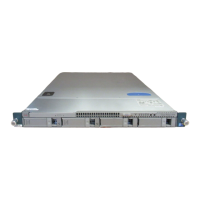SMUs are not an alternative to maintenance releases. They provide a quick resolution of immediate issues.
All defects fixed by SMUs are integrated into the maintenance releases.
For information on upgrading your device to a new feature or maintenance release, see the Cisco Nexus 3000
Series NX-OS Software Upgrade and Downgrade Guide.
Activating an SMU does not cause any earlier SMUs, or the package to which the SMU applies, to be
automatically deactivated.
Note
Package Management
The general procedure for adding and activating SMU packages on the device is as follows:
1
Copy the package file or files to a local storage device or file server.
2
Add the package or packages on the device using the install add command.
3
Activate the package or packages on the device using the install activate command.
4
Commit the current set of packages using the install commit command.
5
(Optional) Deactivate and remove the package, when desired.
The following figure illustrates the key steps in the package management process.
Figure 2: Process to Add, Activate, and Commit SMU Packages
Prerequisites for SMUs
These prerequisites must be met for a package to be activated or deactivated:
•
You must be in a user group associated with a task group that includes the proper task IDs. If you suspect
a user group assignment is preventing you from using a command, contact your AAA administrator for
assistance.
•
Verify that all line cards are installed and operating properly. For example, do not activate or deactivate
packages while line cards are booting, while line cards are being upgraded or replaced, or when you
anticipate an automatic switchover activity.
Cisco Nexus 3548 Switch NX-OS System Management Configuration Guide, Release 6.x
180
Performing Software Maintenance Upgrades (SMUs)
Package Management

